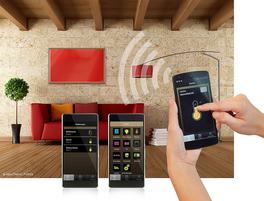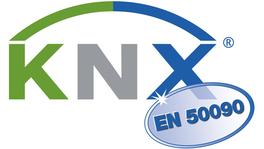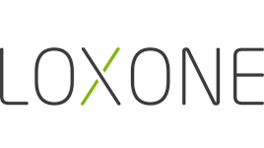smartHome für Ihre easyTherm® Infrarotheizung
Ein intelligentes Zuhause - neudeutsch auch "smartHome" genannt - macht Ihr Leben einfacher. Es automatisiert Ihr Zuhause, bringt Sicherheit und Komfort. Was liegt näher, als easyTherm® - Ihr zukunftsorientiertes Heizungssystem mit behaglicher Wärme - auch hier einzubinden?
Besser und komfortabler
Mit einer guten smartHome Lösung sind die Anwendungsbereiche nahezu unbegrenzt:
- Regeln Sie Ihre easyTherm® Infrarotheizung von jedem beliebigen Ort aus per Handy oder PC.
- Durch Nutzung der Wetterprognose "stimmen" Sie Ihre easyTherm® Infrarotheizung schon auf das Wetter der kommenden Tage ein.
- Mit Fuzzy Logik lernt die Regelung "Ihr" Haus besser kennen und optimiert Aufheizdauer, etc.
- Regeln Sie jeden einzelnen Raum individuell und optimal.
- Haben Sie einen genaue Übersicht über den Verbrauch.
- Optimieren Sie Ihren Eigenverbrauch bei Photovoltaiklösungen
- und, und und ....
Integrieren Sie Ihre easyTherm® Infrarotheizung perfekt in nahezu jede smartHome Lösung. Unten finden Sie vier Beispiele - für weitere Möglichkeiten und Anwendungsfälle fragen Sie uns oder unsere Partner.
Alles smart geregelt
easyTherm® bietet mit der highControl-Serie die smarte Regelung der High-Tech-Infrarotheizung mit dem Smartphone über App!
easyTherm® hat für alles gesorgt. Die Raumthermostate verfügen über Wochen- und Tagesprogramme, ihre großen, leicht ablesbaren LC-Displays zeigen Ihr persönliches Wohlfühl- Programm und Informationen. Die Geräte können montiert oder einfach ins Regal gestellt werden. Ihre easyTherm® Paneele werden exakt gesteuert. Auch drahtlos über Funk.
Ihre Heizung ist online
Mit der highControl-Funktion ist Ihre Heizung immer für Sie bereit und an alle gängigen BUS Systeme (KNX) anbindbar. Sie können Ihre Heizung wahlweise mittels App Ihres Smartphones oder über die lokalen Komponenten steuern. Sie können also von der U-Bahn oder dem Bus aus die Heizung einschalten und wohlige Wärme erwartet Sie zu Hause. So ist vorausschauendes und cleveres Heizen noch besser möglich. Diese Vorteile der Regelung sparen Kosten und sorgen für mehr Wohnkomfort.
kompatible Partnerlösungen
Am Markt gibt es mittlerweile eine sehr große Anzahl an verfügbaren smartHome Lösungen. Untenstehend finden Sie zwei Systeme, deren Qualität wir kennen und mit denen die easyTherm Infrarotpaneele gut funktionieren.





